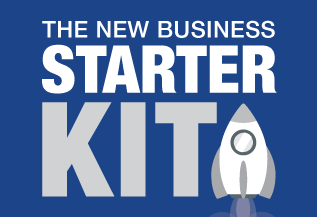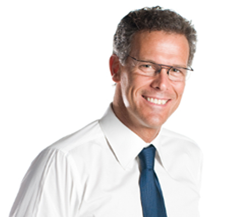Buying Your Next Home
Buying Your Next Home
Stage 4 - Saving For Your Deposit
No time like the present to start saving for a deposit!
Having 20% of the property value (not cost as the cost can be higher than what the bank value the house) is ideal. That way you’ll avoid a hefty charge for Lenders Mortgage Insurance. And no complaints if you can save up more! The higher your deposit payment, the less mortgage you have to pay off.
If you have an equity in your existing home, you may be able to use that towards the purchase of your new home. However, if this is not the case, you need to start saving money towards the deposit of your next home.
The basis for your savings is a solid budget. Having a budget doesn’t mean that you have to give up enjoying life. A budget clearly shows how much you are spending and the areas where you can spend more wisely. It helps you understand your money and makes saving easier.
Here is a 7 step process that I’ve developed to assist you with developing your own personal budget:
Step 1 – Download the Sheridans Home Budget Template
You can download the Sheridans
Home Budget Template here.
Step 2 – Calculate your income
What do you earn? This is all the money you have coming in on a regular basis from your wages, any government benefits you receive and
dividends from shares. If you’re not on a fixed income use your average income (after tax) for the past 12 months. Enter your earnings
amount into the budget.
Step 3 – Work out your spending
To begin with, it’s important that you get an idea of your current spending habits and financial commitments. To do this, get copies of your bank and credit card statements for the last 3 months.
Review all your key expenses and take note of the amounts and their frequency and enter them into the Sheridans Budget Template.
Expenses come in three categories.
Fixed expenses
These are regular bills and payments that can’t be avoided. Fixed expenses are things like phone and internet bills, insurance payments, rent, car registration, electricity, gas, car loan payments.
Variable expenses
These are also unavoidable expenses but the amount varies from month to month and you generally have some control over the amount you spend. Variable expenses are things like groceries, petrol, toiletries, clothes and hairdressing.
Discretionary expenses
These are optional expenses. They include dining out, take away food, pay TV and entertainment.
Step 4 – Add Up Your Savings and Investment
Enter all your savings and investments into the budget template. This will include savings accounts, managed funds and shares. Do not
include your compulsory superannuation contribution.
Step 5 – Review your Expenses and Savings
This is the most important part of your home budget because it shows how you can increase your savings and get your deposit that much sooner.
You want there to be enough money from your income to cover the bills without anxiety and to keep your expenses at a level that won’t make you suffer stress. We suggest the following amounts to avoid financial hardship and stress:
- Fixed expenses should be less than 40% of your total income
- Variable expenses less than 30% of your total income
- Discretionary spending less than 20% of your total income
If you find that you’re over these levels, you’ll need to rethink your spending and perhaps change your lifestyle.
Step 6 – Use the information you’ve gathered to plan for the future and set up bank accounts
Remember when grandmother had a set of envelopes for all the bills to pay? When she got paid she’d divide out the cash - $10 towards the gas bill went into the envelope marked “gas”, $12 for groceries into the “groceries” envelope, $7 for petrol and so on. Anything left over would go into the precious “holiday savings” envelope which she would then hide away in a hard to reach place so she wouldn’t be tempted to spend it on any daily expenses.
This system is like a modernised version of Grandma’s envelopes.
Set up a bank account for 90% of your pay to go into. Set up three sub accounts linked to this account for your different types of expenses: Fixed, Variable and Discretionary.
Now that you know what you earn and what you spend you can be prepared. Once your pay goes into your bank account, divide it out into the Fixed, Variable and Discretionary accounts.
The Sheridans Home Budget Planner can help you calculate how much should go into each account.
Where possible set up automatic payments from your Fixed expense account and Variable expense account to pay your bills. Some companies offer a discount for direct debit payments and a bonus for on time payment. Automatic payments will let you take advantage of this and remove the risk of forgetting to pay a bill and all the embarrassment, hassle and extra fees that go with it.
The Discretionary account holds your “fun money”. Enjoy spending it or add it to your savings as a bonus.
Step 7 – Review Your Savings and Investments
Now you have a clear picture of all of your expenses you can also see how much money you can save regularly. Ideally, your minimum savings amount will be similar to what you expect your home loan repayments to be. If this is not possible because you are currently paying rent, your savings and investment should be at least 10% of your income.
Set up another bank account that’s not easy to access, perhaps at another financial institution. This will be your savings account, and like Grandma, you need to make it a little hard to reach so it doesn’t disappear on daily expenses. If possible, get 10% of your pay automatically transferred to this account.
If you have debt (personal loan, credit card, car loan etc.) your focus should always be paying this off first as debt will reduce your borrowing power.
You can now work out how long it will take you to reach your savings goal. To do that divide the amount you will need for your deposit by your monthly savings.
If you’re not happy about the time it could take you, you might want to consider a more affordable property or adopt more stringent saving measures.
If your expenses plus your savings are pretty much equal to your income you’re right on track. Keep up the good work. Your deposit is within reach.
We’re here to help you
Dealing with banks can be a stressful experience but rest assured that our mortgage broker based in Glenelg (but our mortgage broker services the entire Adelaide Metropolitan area) can help you make the right decision about your mortgage. We will guide you at every stage of your loan process.
Contact us on 08 8376 0455 or drop into our office at 593 Anzac Highway, Glenelg SA 5045.
Next Stage
Stage 5: Get a Loan Pre-Approval
Any advice contained in this article is of a general nature only and does not take into account the objectives, financial situation or needs of any particular person. Therefore, before making any decision, you should consider the appropriateness of the advice with regard to those matters. Information in this article is correct as of the date of publication and is subject to change.














